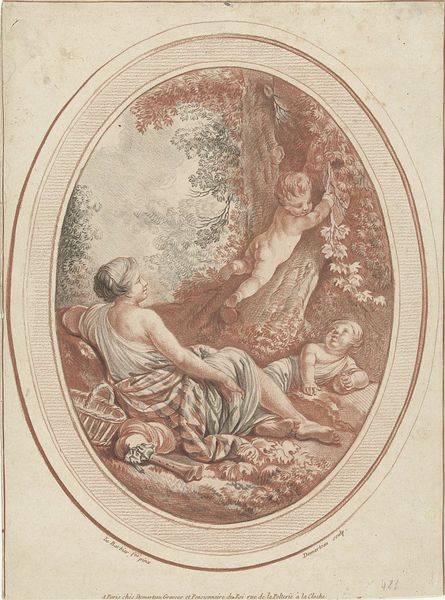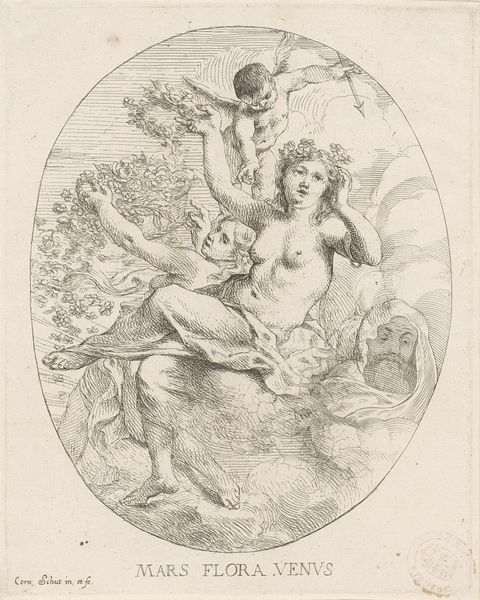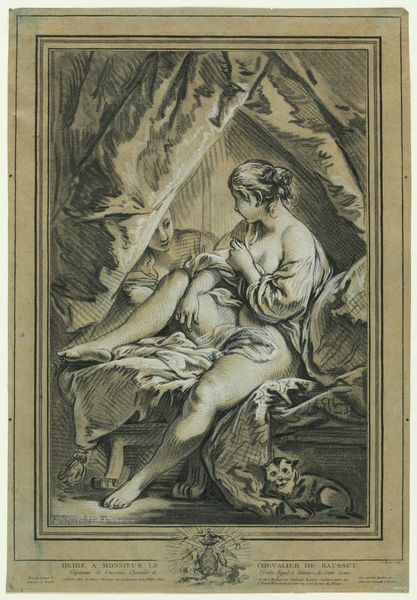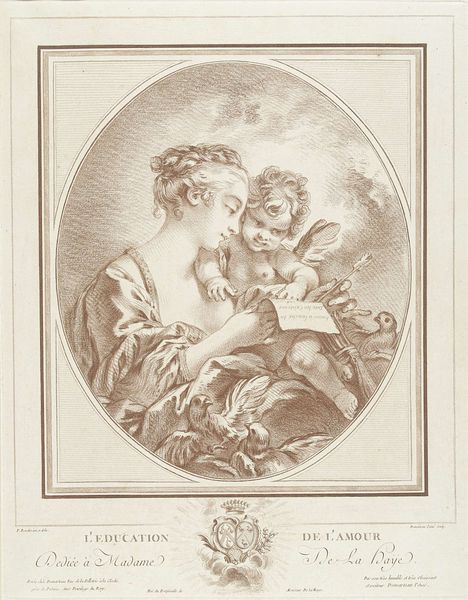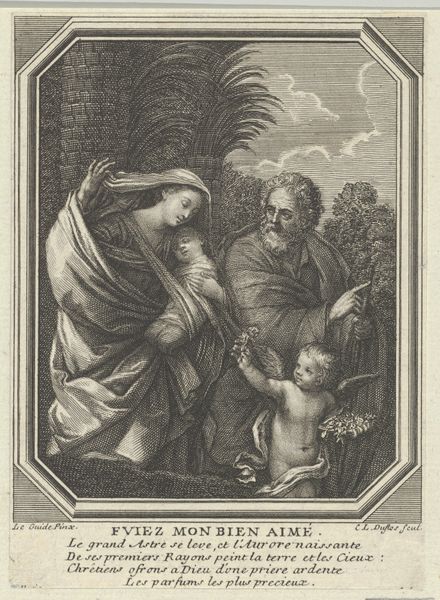
drawing, print, etching, pen
#
drawing
#
allegory
# print
#
etching
#
pencil sketch
#
landscape
#
figuration
#
pen
#
nude
#
watercolor
#
rococo
Dimensions: height 326 mm, width 233 mm
Copyright: Rijks Museum: Open Domain
Curator: Here we have Gilles Demarteau's "Bacchanaal met nimf en twee putti", dating somewhere between 1732 and 1776. It’s an etching, with pen and ink, printed on paper. What's your first take on this pastoral scene? Editor: My first impression is… intimate. Despite the classical subject, the composition and the limited color palette evoke a real sense of quiet domesticity. It feels very immediate and informal, like we’re catching a private moment. Curator: Yes, the informality is striking, especially considering its time. These prints were very popular. This wasn't a unique work of art, but something designed for circulation, for the bourgeoise home. We can see, for instance, how it relates to larger rococo trends that celebrated sensual pleasure and ornamentation. Editor: Ornamentation, absolutely. The swirling lines of the drapery, the twisting grape vines… But even those elements, seemingly meant to be decorative, work to focus the eye. Look how the lines direct us toward the embrace between the nymph and the putto, underscoring this motif of intimacy. Curator: And look at her loose dress. How subversive, and exciting! Considering how politically loaded visual representations could be. Think of what this image did to those, mostly middle-class men, when they contemplate such sensual images… Editor: What interests me most, in the way it uses hatching to imply shape. There are shadows that suggest, not define, volume. See the way the artist's hand moved here: soft and gentle, so the scene could come out in an airy mood. It works against a more bombastic Baroque aesthetic. Curator: Definitely. And that stylistic departure speaks volumes about shifting societal values. We must remember, visual and material culture like this helped create and cater to those shifting values. The artist made art to serve patrons but, ultimately, contributed to shape society's tastes. Editor: A print like this really prompts one to consider not only what is being depicted, but how form communicates meaning and cultural aspiration. Curator: Agreed, I am pleased at how the image showcases societal change by examining how artworks navigate various spheres.
Comments
No comments
Be the first to comment and join the conversation on the ultimate creative platform.
